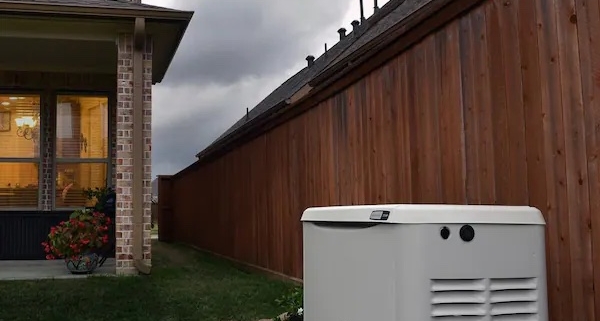Choosing the Right Generator for Your Home and HVAC System
We’ve all been there. A power outage knocks out electricity in the home and with no air conditioning or heating, inside temperatures can become extreme. That’s why homeowners are increasingly turning to generators to ensure their systems can continue to run when the power grid fails. If you’re thinking of adding a generator to your setup, here are a few things to consider…
Finding the Right Generator for the Job
Not every generator can manage the amount of electricity your home will need during an outage. Specifically, portable generators like the ones you find at your local home improvement store likely will not provide enough power and can potentially lead to electrical damage during power peaks. We always recommend permanent, stand-by generators to ensure you can keep things running safely and effectively. But even stand-by generators should be sized appropriately for the items you want to keep running when the power goes out. So ask yourself: Do you want to simply keep the pipes from freezing, the sump pump running, and the fridge and freezer cold? If so, a small generator would probably do the trick. However, if you want no drop in quality of life, including full HVAC functionality, a larger whole-house unit is best. While these do come at a higher price tag and may require an additional gas line and a larger meter, the peace of mind is priceless. Although A. N. Roth does not install stand-by generators, we can recommend a qualified installer who can do a walkthrough of your home to perform a load calculation to properly size a unit that can handle your needs.
Location Is Everything
Placement of your generator requires careful thought. They can be relatively noisy when running, so placing them near a bedroom may not be ideal, especially if it ever needs to run for several days at a time. But more importantly, natural gas and propane generators release carbon monoxide exhaust which can be deadly if not managed properly. Generators should be installed so that the exhaust is vented away from doors and windows. It’s also a good idea to invest in a carbon monoxide detector as an added failsafe. Another thing to consider is that exhaust puts out heat that can negatively affect landscaping. A qualified installer will help you find the perfect spot in terms of safety and convenience.
Maintenance Is Key
Regular maintenance is required for all stand-by systems. Generators will need to be exercised weekly, which means turning them on and letting them run for about 15 minutes. As a result, even if you don’t experience a power outage, the generator’s oil and air filter will need to be changed annually. Regular maintenance also helps you get familiar with your unit so when you do have an outage, you know how everything works and how to check and maintain the oil level.
Leave Installation to the Professionals
Installing a whole-house, stand-by generator is not a task to be taken lightly. It involves accessing your high voltage electrical panel, running new gas lines, and possibly even upsizing your gas meter. While to some these may not sound like perilous tasks, working with electricity and gas is best left to professionals. Even the smallest leak or issue can mean big problems down the line. However, when installed correctly, a stand-by generator can do wonders to quell the worry and inconvenience brought on by unexpected outages.
If you have any questions about installing a generator at your home or business, please don’t hesitate to Contact Us today!



